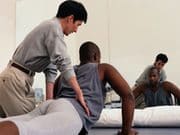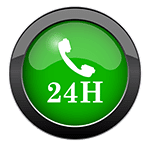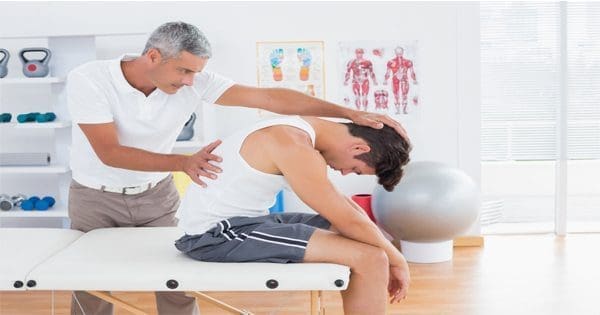[et_pb_section bb_built=”1″ admin_label=”section”][et_pb_row admin_label=”row”][et_pb_column type=”4_4″][et_pb_text admin_label=”Text”]

Table of Contents
People With Low Back Pain Should Try Drug-Free Remedies
From simple heat wraps to physical therapy — before resorting to medication, according to new treatment guidelines.
Low back pain is among the most common reasons that Americans visit the doctor, according to the American College of Physicians (ACP), which released the new guidelines on Monday.
The recommendations put more emphasis on nondrug therapies than previous ones have. They stress that powerful opioid painkillers — such as OxyContin and Vicodin — should be used only as a last resort in some cases of long-lasting back pain.
Another change: When medication is needed, acetaminophen (Tylenol) is no longer recommended. Recent research has shown it’s not effective for low back pain, said Dr. Nitin Damle, president of the ACP.
The good news, according to Damle, is that most people with shorter-term “nonspecific” low back pain improve with simple measures like heat and changes in activity. Nonspecific pain, Damle explained, is the kind where your back hurts and “you’re not sure what you did to it.”
He said that’s different from “radicular” back pain, which is caused by compression of a spinal nerve — from a herniated disc, for example. Typically, this problem has telltale symptoms like pain that radiates down the leg, or weakness or numbness in the leg.
In general, the ACP said, people with low back pain should first try nondrug options.

Treating Back Pain
For Pain That Has Lasted Fewer Than 12 Weeks
Research suggests heat wraps, massage, acupuncture and spinal manipulation may ease pain and restore function to a moderate degree, according to the guidelines.
If the pain lasts more than 12 weeks, studies suggest some drug-free options can still be helpful, the ACP said.
Those include exercise therapy; acupuncture; “mind-body” therapies like yoga, tai chi, mindfulness-based stress reduction and guided relaxation techniques; and cognitive behavioral therapy.
When medication is used, the ACP advises starting with nonsteroidal anti-inflammatory drugs (NSAIDs) such as ibuprofen (Advil, Motrin) and naproxen (Aleve) — or possibly muscle relaxants.
If that fails, and pain persists, the next options might include duloxetine (Cymbalta) — which is prescribed for both depression and nerve pain. Or the painkiller tramadol, which is a narcotic, but it can relieve pain and affect function in the short term, according to the guidelines.
“Only in rare circumstances should opioids be given,” Damle said. “And then only for a few days.” That’s partly because of the risks of opiate painkillers, he said, which include addiction and accidental overdose.
Besides that, Damle added, there’s “little evidence” that opioids help people with low back pain. The recommendations, published online Feb. 13 in the Annals of Internal Medicine, are based on a review of studies looking at what works — or doesn’t work — for various stages of low back pain.
In many cases, the ACP found, the therapies — drug or not — showed “small” to “moderate” benefits.
When it came to radicular back pain, specifically, there was little evidence on what worked. But exercise therapy seemed to help.
The Guidelines Say Non-Drug Options Are The Best First Step

That advice is “reasonable,” said Dr. Steven Atlas, a primary care doctor at Massachusetts General Hospital and associate professor at Harvard Medical School.
Atlas, who wrote an editorial published with the guidelines, noted that all medications — including NSAIDs and muscle relaxants — can have side effects. And some patients, particularly older adults, may not be able to take them safely.
Still, Atlas said, the recommendations will probably be a big change for many primary care doctors.
In the real world, he noted, a doctor may not have a list of acupuncturists to refer patients to, for example. And then there’s cost.
“In everyday care, it gets a lot more complex,” Atlas said. “From the patient’s perspective, it’s, ‘What’s available in my area? What does my insurance cover?’ ”
Damle agreed that people’s treatment decisions will depend largely on those practical issues.
Atlas made another point about real-world practice: Doctors often recommend combinations of therapies, rather than a single one.
He said there’s a need for more “pragmatic” clinical trials that test back-pain therapies as they are commonly prescribed in practice.
For now, Atlas suggested people with mild back pain try to “de-medicalize” the problem and focus on simple self-care.
For people with chronic pain, he said it’s important to be realistic about whatever therapy you try.
“If you expect to have zero pain afterward, most of our therapies will disappoint,” Atlas said.
The guidelines only address noninvasive treatments for low back pain — and not invasive procedures like medication injections or surgery.
The question of when people should resort to those, Atlas noted, is the “elephant in the room.”
SOURCES: Nitin Damle, M.D., president, American College of Physicians, Philadelphia; Steven Atlas, M.D., associate professor of medicine, Harvard Medical School, and physician, general internal medicine, Massachusetts General Hospital, Boston; Feb. 13, 2017, Annals of Internal Medicine, online
News stories are written and provided by HealthDay and do not reflect federal policy, the views of MedlinePlus, the National Library of Medicine, the National Institutes of Health, or the U.S. Department of Health and Human Services.
Sourced From: Try Drug-Free Options First for Low Back Pain, New Guidelines Say
Copy Rights: MedlinePlus: Back Pain
For more information, feel free to ask Dr. Jimenez or contact us at 915-850-0900
By Dr. Alex Jimenez El Paso Chiropractor and Back Specialist

Related articles
[/et_pb_text][/et_pb_column][/et_pb_row][/et_pb_section]
Post Disclaimer
Professional Scope of Practice *
The information on this blog site is not intended to replace a one-on-one relationship with a qualified healthcare professional or licensed physician and is not medical advice. We encourage you to make healthcare decisions based on your research and partnership with a qualified healthcare professional.
Blog Information & Scope Discussions
Welcome to El Paso's Premier Wellness and Injury Care Clinic & Wellness Blog, where Dr. Alex Jimenez, DC, FNP-C, a board-certified Family Practice Nurse Practitioner (FNP-BC) and Chiropractor (DC), presents insights on how our team is dedicated to holistic healing and personalized care. Our practice aligns with evidence-based treatment protocols inspired by integrative medicine principles, similar to those found on this site and our family practice-based chiromed.com site, focusing on restoring health naturally for patients of all ages.
Our areas of chiropractic practice include Wellness & Nutrition, Chronic Pain, Personal Injury, Auto Accident Care, Work Injuries, Back Injury, Low Back Pain, Neck Pain, Migraine Headaches, Sports Injuries, Severe Sciatica, Scoliosis, Complex Herniated Discs, Fibromyalgia, Chronic Pain, Complex Injuries, Stress Management, Functional Medicine Treatments, and in-scope care protocols.
Our information scope is limited to chiropractic, musculoskeletal, physical medicine, wellness, contributing etiological viscerosomatic disturbances within clinical presentations, associated somato-visceral reflex clinical dynamics, subluxation complexes, sensitive health issues, and functional medicine articles, topics, and discussions.
We provide and present clinical collaboration with specialists from various disciplines. Each specialist is governed by their professional scope of practice and their jurisdiction of licensure. We use functional health & wellness protocols to treat and support care for the injuries or disorders of the musculoskeletal system.
Our videos, posts, topics, subjects, and insights cover clinical matters and issues that relate to and directly or indirectly support our clinical scope of practice.*
Our office has made a reasonable effort to provide supportive citations and has identified relevant research studies that support our posts. We provide copies of supporting research studies available to regulatory boards and the public upon request.
We understand that we cover matters that require an additional explanation of how they may assist in a particular care plan or treatment protocol; therefore, to discuss the subject matter above further, please feel free to ask Dr. Alex Jimenez, DC, APRN, FNP-BC, or contact us at 915-850-0900.
We are here to help you and your family.
Blessings
Dr. Alex Jimenez DC, MSACP, APRN, FNP-BC*, CCST, IFMCP, CFMP, ATN
email: coach@elpasofunctionalmedicine.com
Licensed as a Doctor of Chiropractic (DC) in Texas & New Mexico*
Texas DC License # TX5807
New Mexico DC License # NM-DC2182
Licensed as a Registered Nurse (RN*) in Texas & Multistate
Texas RN License # 1191402
ANCC FNP-BC: Board Certified Nurse Practitioner*
Compact Status: Multi-State License: Authorized to Practice in 40 States*
Graduate with Honors: ICHS: MSN-FNP (Family Nurse Practitioner Program)
Degree Granted. Master's in Family Practice MSN Diploma (Cum Laude)
Dr. Alex Jimenez, DC, APRN, FNP-BC*, CFMP, IFMCP, ATN, CCST
My Digital Business Card





